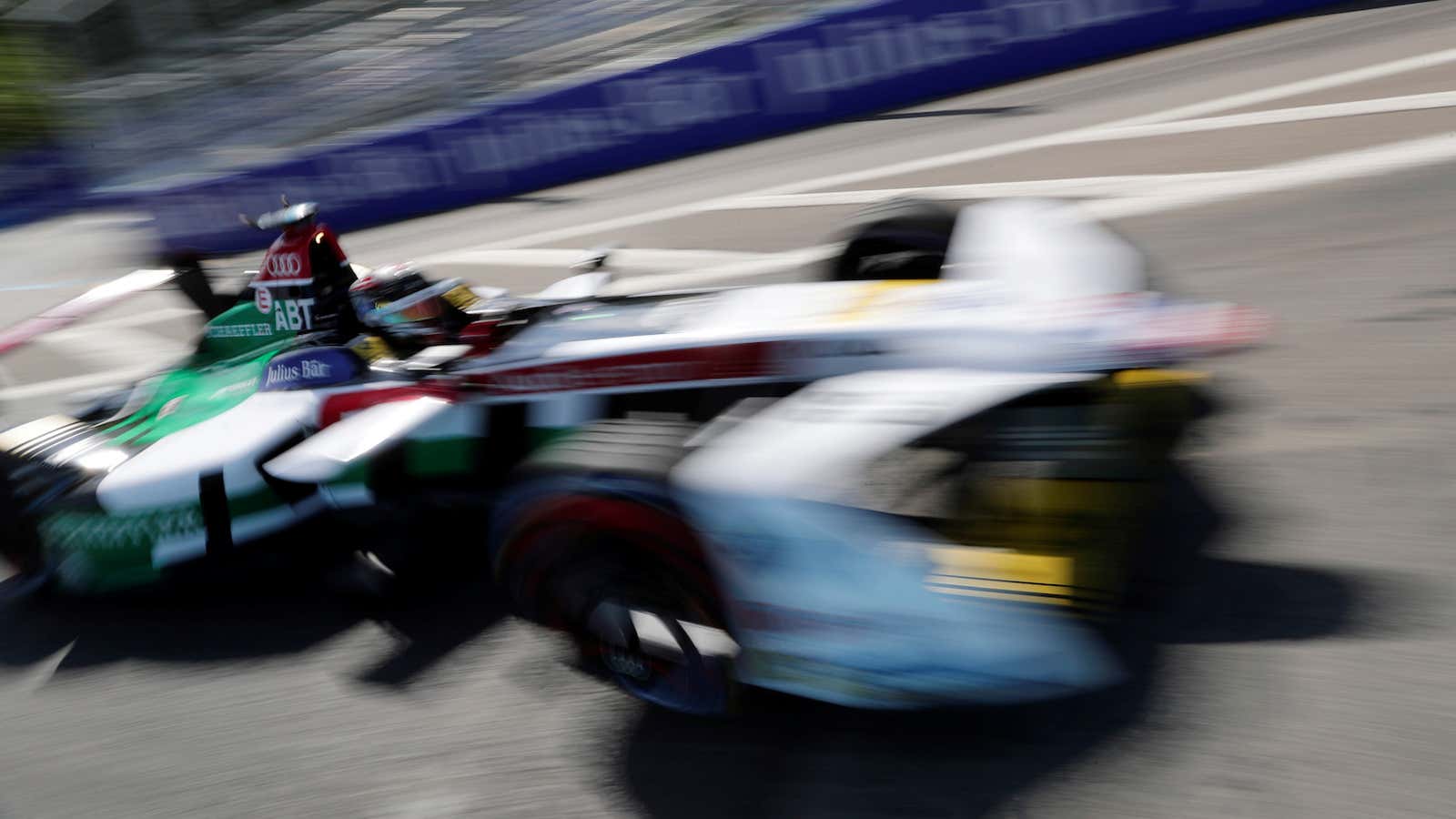We at Quartz have been writing about Formula E since its debut in 2014 when the Fédération Internationale de l’Automobile, the governing body for auto racing, decided to create an electric-car racing championship. After that first race, I wrote:
The races only last an hour and each team has two cars—the organizers haven’t quite figured out a way to safely change batteries in one car nor make one battery last the whole race, so there’s a switch halfway through the race.
Now in its fifth year, that all changes. Formula E will have a single car that can drive for the whole race for the first time.
According to the organizers, the Gen2 Formula E car has double the battery storage capacity and double the range of the current car. It happens in all forms of technology—witness the daily lifespan of the iPhone now compared to the 2007 launch model—but feels especially pronounced in electric cars, which have to combine extremely complicated mechanics and engineering with those the battery and computer technology. “This car represents the future of racing,” said Formula E founder Alejandro Agag.
With the historic influence of motorsport—new technologies like disc brakes originated at the cutting edge of racing before migrating to mass-produced street cars—it could also benefit the average driver. The doubling of range in a few short years is far more than what we’ve seen on the roads. The original Tesla Roadster from 2006, for example, launched with a range of 244 miles on a full charge. The newer, much smaller Model 3 on sale this year comes with a 310-mile range.
The new car comes to Formula E at the same time as the likes of Porsche, BMW, and Mercedes-Benz are all joining the championship. And in those five years, many of those carmakers have gone from ignoring electric cars or criticizing them to embracing them as the future of car manufacturing.
The latest season of Formula E starts Riyadh, Saudi Arabia on Dec. 15.
